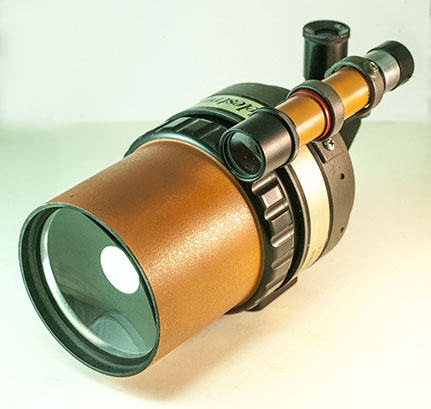
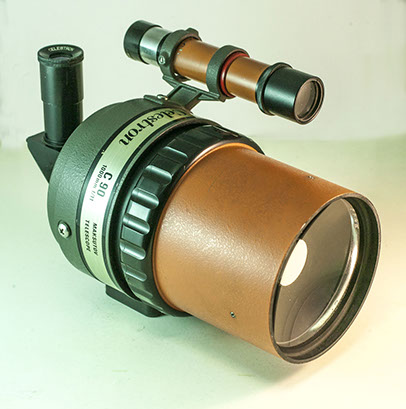
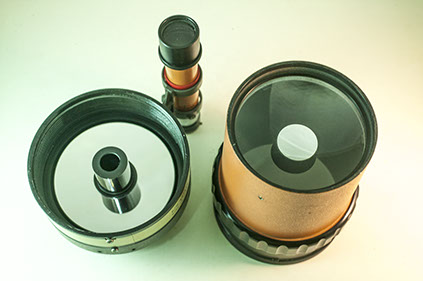
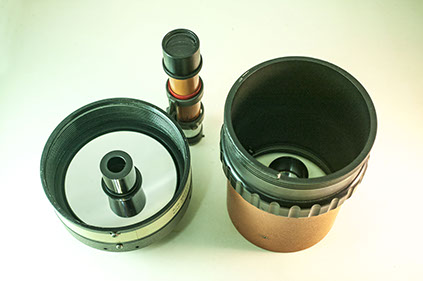
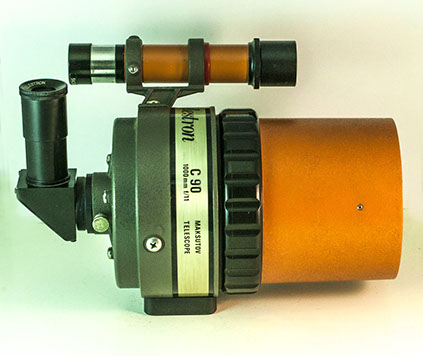
The focus mechanism
The front focusing ring in C90 is the most convenient technique Celestron has devised in focusing. It very much looks like a Japanese made telephoto lens. The two screws on the base of the telescope (above, right) are responsible provide the rotational stops for near, and far end of focusing rotation for the front barrel.
Primary Mirror Testing with an Interferometer
The interferometer (below) is equipped with interchangeable focusing objectives that focus the interferometer beam to a point, and it starts to diverge again. With the f/10 objective, the beam covers the entire mirror surface. By adjusting the interferometer's height, tilt adjustment, and direction of its beam propagation, the focal point of the primary mirror on the telescope coincides with the focal point of the f/10 objective. At this precise alignment, the interferometer sees the telescope's wavefront as flat, and compares it with its own reference flat for surface accuracy.
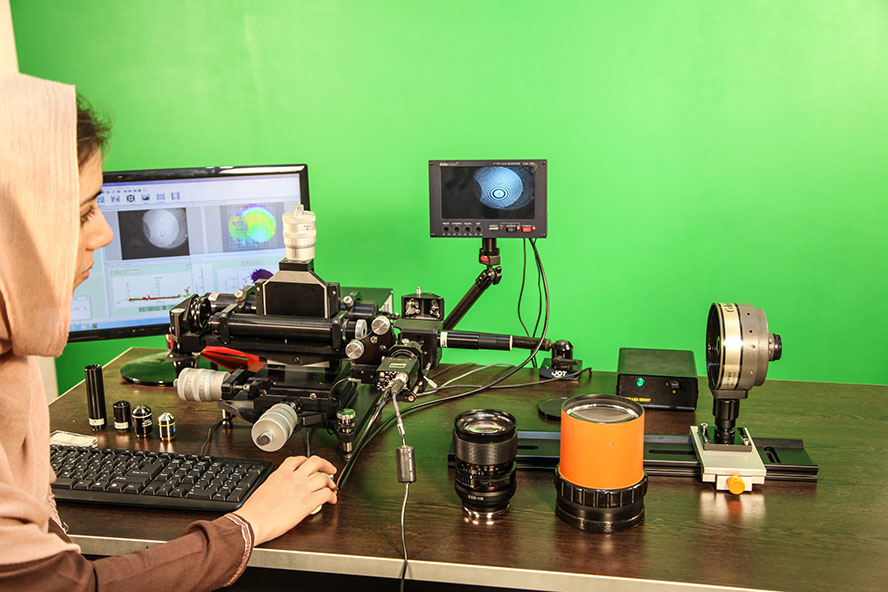
-------------Video Monitor
Test
Mirror